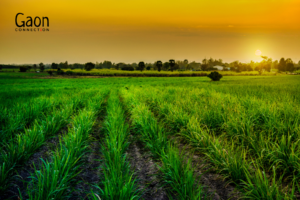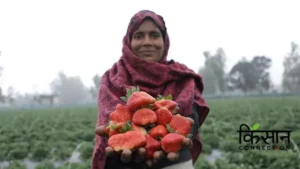Rajasthan’s Banswara district, bordering Gujarat, with tribal population of more than 76 per cent (census 2011), is infamous for both rural distress and migration. For a large part of the year, houses of adivasi families in the district remain locked up as they travel far looking for work.
However, a quiet but significant change is spreading in the tribal-dominated district, about 500 kms south of the state capital Jaipur, as several migrant families have returned home and have taken up organic farming as means of their livelihood. These tribal farmers are now becoming torch bearers of organic cultivation in the state where the government is pushing for zero-budget farming to increase farmers’ income and restore soil health and fertility.
Mansingh Damor, a 40-year-old farmer from Amlipada village is one of the farmers who have taken up organic cultivation. “I stopped using chemical fertilisers and pesticides when I learnt of the harm they could do to health, about three years ago,” the farmer told Gaon Connection. For two years now, he has been growing organic fruits, vegetables and wheat. “I also have guava and mango trees on my land,” a proud Damor said.
Also Read: A village in Bihar goes organic, transforming the lives of its women
Organic farming has become the mission of Chowka Bhai Maida too. “I did not know about the ill-effects of chemicals, now I do,” said the farmer from Nagda Badi village in Kushalgarh tehsil, Banswara. “I am earning more as I now cultivate vegetables, fruits, wheat and maize in my five bighas of land. I also prepare my own organic fertilisers,” Chowka Bhai told Gaon Connection.
Push to zero-budget farming
There are approximately 500,000 farmers in Banswara that has a population of about 1.8 million. The land under cultivation of kharif crops is about 235,000 hectares, where soybean, urad dal, rice and cotton are grown. And for the rabi crops of wheat, chana and maize, 142,000 hectares of land are under cultivation.
“Banswara has about thirty thousand hectares of land under organic cultivation,” RK Varma, district agriculture officer, Banswara, told Gaon Connection. “Kushalgarh tehsil is where most of the organic cultivation is happening in the district,” he said.
The Rajasthan government has been encouraging zero-budget agriculture that promotes low cost cultivation and the use of inexpensive natural fertilisers and pesticides such as cow dung, cow urine, jaggery, etc. This gave an impetus to farmers in 39 villages of Banswara where they were taught about zero-budget farming. Groups of 50 farmers were created for this purpose.
These farmers were shown how with the dung and urine of just one cow of a native breed, 30 acres (over 12 hectare) could be fertilised and kept safe from harmful pests. The farmers had no need to spend money on buying fertilisers and pesticides from the market. Even the use of water and electricity for irrigation came down. With almost nil input costs, the organic farmers could get better and healthier yields.
According to the Union ministry of agriculture and farmers’ welfare, as of March 2020, of the 140.1 million hectares of land under cultivation in the country, 2.78 million hectares were under organic cultivation, that is about 2 per cent of the total cultivated area.
Training the farmers
Progressive organic farming is getting its much needed boost in Banswara with the help of VAAGDHARA (Voluntary Association of Agricultural General Development Health and Reconstruction Alliance), a non-profit that works with farmers.
“The farmers in Banswara are adopting new practices along with the traditional modes of farming,” Jayesh Joshi, who heads VAAGDHARA, told Gaon Connection. “Through the farmers collective we are providing several training capsules as a result of which the farms are flourishing, especially in the adivasi areas,” he said.
There are many examples of farmers who have embraced the organic way. Bhurji Katara from Banswara who once struggled to grow anything on his two bighas of barren land, is a happy man now. With the use of organic fertilisers made of cow dung and cow urine, his land has come alive and he now grows an abundance of fruits and vegetables that is earning him a good income.
“It is heartening to see so many farmers adopting organic cultivation. They are becoming aware of the value of natural farming, indigenous seeds and the importance of a healthy soil,” Joshi said.
Many of them, who were on the verge of selling off their land because it yielded nothing, have changed their minds, the head of Wagdhara pointed out, as awareness drives and training in organic farming in several villages helped them rejuvenate their lands.
Also Read: A village in Bihar switches to organic farming, sets an example
That is what happened with Arjun Damor of Chulipada village whose land had a steep gradient and therefore could hold no water that would always run off. But in one of the awareness drives organised by the non-profit Wagdhara, Damor learnt of check dams and bunds and he now took measures to ensure there was no runoff and his land had enough moisture.
Increase in cultivation area
Apart from the district’s hard working farmers, there has been an effort to reach more water for irrigation to the region that was predominantly rainfed. Now pumps and motors allow the farmers to access groundwater too. This has led to more areas coming under cultivation.
For example, in 2007-2008, soybean was cultivated in this region in 20,000 hectares. Between 2010 and 2021, the area of soybean cultivation has gone up to 72,000 hectares. While maize was not grown traditionally here, now nearly 40 hectares is under maize cultivation. Wheat is grown in about 100,000 hectares.
“There has been a significant change in cultivation in Banswara in the last one and a half decades,” Pramod Rokdiya, former divisional director, agricultural research centre, Banswara, told Gaon Connection.
“Farmers are cultivating cash crops now. In both the plains and in the hilly areas, organic farming is gathering momentum, especially in the forested Kushalgarh and Gangar Talai areas,” Rokdiya said.
“Migrations have come down, the government is supporting organic farming and, in due course of time, the results will be happy,” the official hoped.
Read the story in Hindi.



















